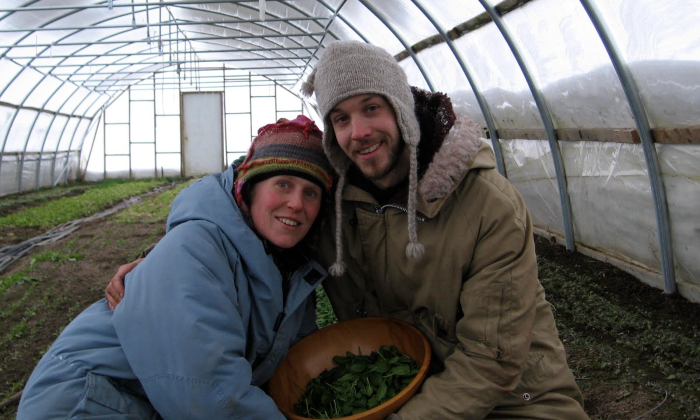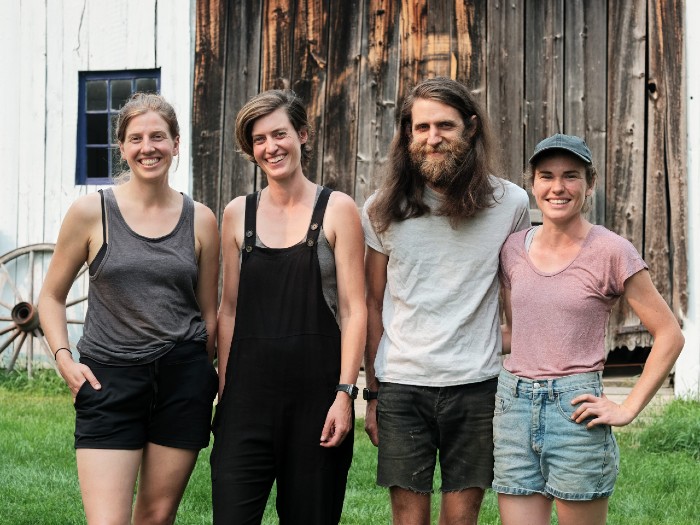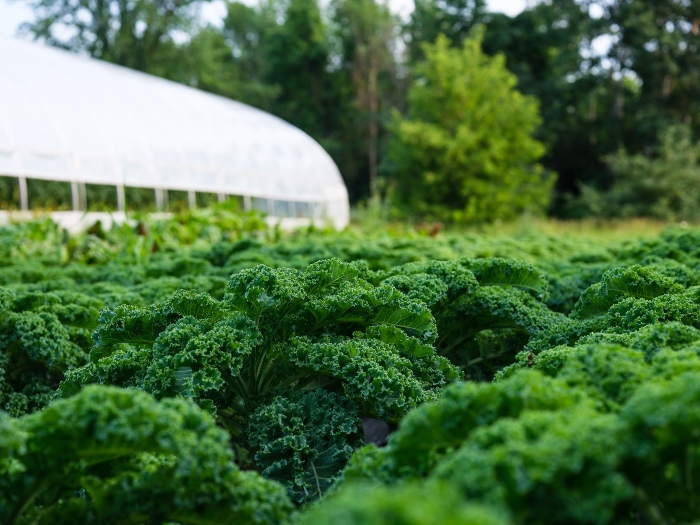Once you’ve decided to start a farm, besides making sure you’ve got the right education to support your business, the next critical step is to find the right farmland. There are different ways to start your farm and keep in mind that this is not a “one size fits all” project.
After spending time working on organic farms in the United States and New Mexico, Jean-Martin Fortier and his wife, Maude-Hélène Desroches, rented ⅕ of an acre of land in Quebec for two years before buying their first farm (an old rabbit farm), Les Jardins de la Grelinette, in 2004. These experiences taught them about land tenure and the various ways that property rights can be allocated, transferred, or managed. When starting a farm, there are many ways of accessing land. Let’s review a couple of them with the hope that you’ll discover the path that works best for you!
Renting or Leasing Land
Starting a farm doesn’t necessarily mean you have to purchase land. There are many ways of accessing land and many options for how one can secure a plot and begin production. For many people, renting or leasing land is a “safer” and more economical way of exploring life as a farmer. By committing to a shorter-term arrangement, you can farm the land for a season and learn more about the factors that impact your success – and don’t forget, understanding your soil health is a must.
“With renting land, it didn’t take much investment in tools and equipment to get started,” says Jean-Martin. “We lived in a tent and our expenses were low enough that we were able to cover our farming costs, earn enough money to make it through the winter, and even do some traveling.”

By eliminating down-payments or potential loans to purchase land, this reduces the chances of taking on debt to farm – and we can all agree that minimizing debts is certainly ideal.
However, in contrast, by renting or leasing land, you may not be able to guarantee long-term commitments with the landowner. You may also be restricted with what you plant (i.e. no perennials) and use on-site and may not be able to invest in long-term methods, such as multi-year crop rotations, that build soil health.
Also with renting or leasing arrangements, you will not have the opportunity to build equity, which could be helpful if you want to purchase land down the road.
But again, under the right circumstances, renting or leasing could work very well for you, especially if you already have a preexisting, positive and trusting relationship with the landowner. However, above all, renting or leasing land requires extensive negotiation and detailed written agreements that clearly outline the expectations of both parties for both the landowner and you, the farmer!
If you are planning to negotiate a lease, be sure to read through the comprehensive guidebook for Canadians here (though focused on Ontario, it’s adaptable and provides useful insights that may apply in any region). In the United States, LandForGood is a great organization to find helpful guidance on key steps. They offer some great resources –including a variety of lease templates– in their “Toolbox” here.
Co-operative Farming
Got a group of friends dedicated to building a farm future together? Then setting up a cooperative farm could work well for you. Farming with multiple people versus doing it alone or with another person can really make a difference in how your overall business can be managed smoothly. It also means that by having a dedicated crew that manages the various elements of the farm, work/life balance can be that much more attainable for everyone involved.

Above all, a successfully functioning cooperative farm is grounded in strong and understanding relationships between the co-op’s farming partners. Clear communication, trust, and respect are primary ingredients to build a healthy and dynamic team. And with more folks on deck, you’ve got a strong labor force! Is one of your team members really good at bookkeeping, while another is passionate about designing crop rotations? Is someone inspired to make team meals on a regular or rotating basis? Think about the individual strengths that each co-op member brings and prefers and see how you can divide up tasks and fulfill the various supports required for running a farm.
In addition, your tools and equipment can be shared investments with your co-op partners, thus reducing the overall cost that one person would have to make to establish the farm’s infrastructure.
Want to learn more about Co-operative Farming? Check out this great guidebook by The Greenhorns.
Buying Land
The choice of buying farmland is the path with the most significant financial investment, but then you’ll have a piece of land that can be yours, forever, and developed on your own terms. Make sure to do lots of research before making any commitments, especially regarding any relevant zoning or municipal bylaws that may impact your property. It may also help to do a soil test to determine the quality of the land you would be working with.

“After renting land, eventually we felt the need to become more settled in the long-term, so buying farmland became more of a priority for us,” says Jean-Martin. “By owning farmland, we had the long-term investments that intended to increase in value as we put work into improving the soil health and developing our farm and farm infrastructure. This chapter meant that our market garden would have to generate enough income to make payments on the land, pay for the construction of a new house, and keep the family afloat. With careful thought and preparation, we were able to make it happen.”
For many regions, the price of even just one acre of farmland can be prohibitive. Cast your net wide and take time to explore different options that meet your ideal needs – there’s no need to jump on the first plot that you visit. If you examine the pros and cons of different sites, you can find a deal that works for you. Word of mouth remains a very useful way to uncover the farm of your dreams!
Plus, there are various supports that can help to finance these critical start-up costs, so be sure to review options with your local department of agriculture, at your bank, and through your broader farming network. Don’t forget that there are different ways to start your farm. Take your time to review all the possibilities and good luck!
Choosing to Farm as a Way of Life
If you’re dreaming of starting a biointensive small-scale farm, we’ve put together an Introduction to market gardening course specifically designed to give you the basics of how to do it. If you are ready to start your own market garden and are looking for more advanced information, join the Market Gardener Masterclass. The Masterclass is an online course that teaches the most effective and proven techniques to successfully operate a diversified small-scale farm. They will guarantee you consistent results, as well as help you make the most of your valuable time and keep your body in shape for years to come.











